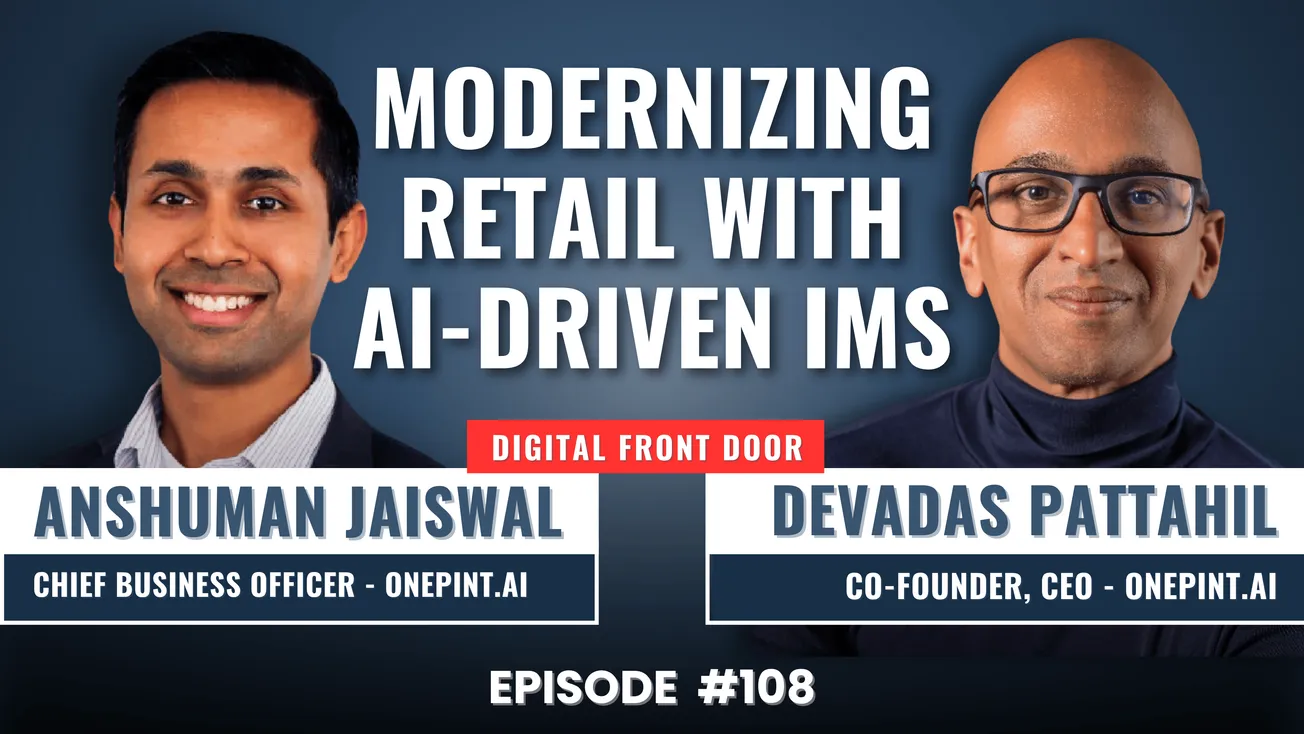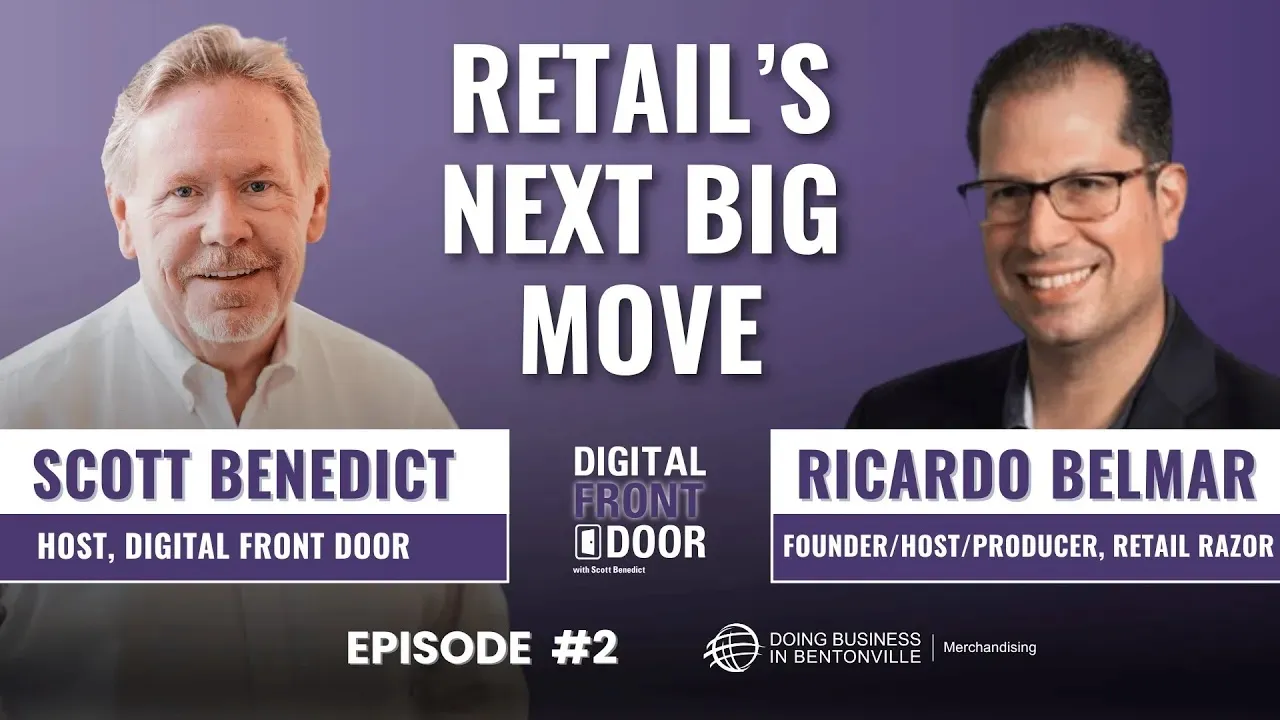Ever wonder why that item you desperately wanted was out of stock online but sitting unsold on a store shelf across town? The culprit might be hiding in outdated inventory management systems that many retailers still rely on.
Modern retail demands seamless omnichannel experiences, but achieving this requires more than just slick customer-facing apps. Behind every successful retail operation lies sophisticated inventory management technology—the unsung hero determining whether products are available when and where customers want them.
In this enlightening conversation, OnePint.Ai's CEO Das Patithil and Chief Business Officer Anshuman Jaiswal reveal how their company is revolutionizing retail operations through AI-powered inventory management. They explain why many growing brands struggle with basic spreadsheet-based systems that worked during startup phases but become major liabilities as operations scale.
The discussion dives into three critical benefits of modern inventory systems: driving top-line growth by preventing stockouts, reducing fulfillment costs through optimized inventory placement, and improving cash flow by minimizing excess inventory. Beyond these tangible benefits, the experts highlight how AI applications in inventory management have evolved from basic forecasting to sophisticated decision-making systems that determine optimal inventory placement and automate critical supply chain decisions.
For retailers considering technology investments, Patithil and Jaiswal emphasize that inventory management systems represent foundational capabilities that enable all other retail technologies to work effectively. They warn about "the cost of doing nothing"—how delaying these crucial investments creates mounting operational challenges as businesses expand to more channels and markets.
Whether you're running a small D2C brand or managing a mid-sized retail operation, this episode offers valuable insights into how modern inventory technology can transform your business. Listen now to discover why smart inventory solutions powered by AI are no longer optional but essential for retail success.
More About this Episode
How Modern Inventory Management Systems Are Powering the Future of Omnichannel Retail
Inventory management has always been a cornerstone of effective retail operations. But in today’s rapidly evolving, omnichannel landscape, traditional systems simply can’t keep pace. The rise of e-commerce, marketplace selling, and customer expectations for convenience and speed have made it clear: outdated, disconnected tools like spreadsheets and legacy software are no longer sufficient.
Modern retail demands more than visibility. It requires intelligence. Intelligent Inventory Management Systems (IMS) that are AI-powered, real-time, and unified across all sales channels are fast becoming a strategic differentiator. Companies like Nextuple and its AI-driven subsidiary OnePint.AI are leading this transformation, helping retailers and consumer brands shift from reactive inventory practices to proactive, insight-led decision-making.
In this article, we’ll explore how modern IMS platforms are redefining back-end operations, why AI is central to this shift, and how businesses that fail to evolve risk being left behind.
The Broken Backbone of Legacy Inventory Systems
For decades, many retailers operated with siloed inventory systems, one set of tools managing store operations, another for e-commerce, and yet another for marketplace fulfillment. This fragmentation led to inaccurate demand forecasting, stockouts, overstock, missed sales, and poor customer experiences. Even as some retailers expanded into digital channels, their back-end systems remained stuck in the past, using Excel sheets and basic ERPs to manage complex inventory flows.
As Scott Benedict notes in his conversation with OnePint.Ai’s CEO Das Pattathil and Chief Business Officer Anshuman Jaiswal, mid-market retailers and B2C brands face the same operational complexities as larger retailers but often lack the infrastructure and capital to implement sophisticated systems. That gap has become a major barrier to scaling and servicing modern customers.
The problem is no longer just about seeing what inventory is available. It’s about placing the right inventory in the right location, at the right time, to meet dynamic customer expectations across all channels.
Why Inventory Systems Must Be Foundational to Omnichannel Success
In today’s competitive environment, businesses are increasingly investing in omnichannel capabilities, buy online pick up in store (BOPIS), same-day delivery, ship-from-store, and more. However, without a strong IMS underpinning these capabilities, many of these investments falter.
As Das explains, businesses often focus first on top-line growth: acquiring customers, expanding product assortments, and scaling across platforms. But as that complexity increases, operational inefficiencies quickly surface. If a business lacks accurate demand forecasting or can’t track real-time inventory across channels, fulfillment costs balloon and customer satisfaction drops.
A modern IMS provides the critical infrastructure to support:
- Accurate demand forecasting
- Optimized inventory placement
- Real-time inventory visibility across all channels
- Reduced fulfillment costs
- Improved in-stock rates and fewer stockouts
Anshuman calls this the “foundation” upon which everything else, from promotions and pricing to assortment planning and customer experience, is built. Without it, any other technological investment won’t be fully leveraged.
AI: The Game-Changer for Inventory Management
Artificial intelligence is transforming how retailers and brands manage their inventory. While AI has traditionally been used to improve the front-end experience, personalized recommendations, search optimization, dynamic pricing, it’s now moving aggressively into back-office systems.
According to Das, the AI-powered revolution in supply chain and inventory systems is finally catching up. Technologies like machine learning, time series forecasting, neural networks, and generative AI (GenAI) are now enabling retailers to:
- Tailor forecasting models to specific product categories (e.g., fashion vs. CPG)
- Incorporate variables like supplier lead time and shipping constraints
- Determine optimal inventory levels by location and channel
- Automatically place and replenish inventory
- Explain AI-driven decisions in human terms using GenAI
This “explainability” is a major breakthrough. One of the long-standing challenges with AI in operations has been trust. Planners and buyers were hesitant to rely on models they didn’t understand. GenAI changes that by providing visibility into the “why” behind a recommendation.
Moreover, Das mentions the emerging role of agentic AI where multiple AI agents (e.g., forecasting agent, inventory placement agent, pricing agent) collaborate to make decisions. This will radically reduce the burden on human planners, allowing them to oversee rather than micromanage complex inventory flows.
Measuring the ROI of Inventory System Investments
For CFOs and operational leaders, technology investments always come down to return on investment. OnePint.AI encourages clients to evaluate IMS investments across three primary dimensions:
- Top-Line Growth
- How much more can you sell with better availability and fewer cancellations?
- What is the revenue lift from higher in-stock rates and faster fulfillment?
- Bottom-Line Efficiency
- Can you reduce fulfillment costs by keeping inventory closer to the customer?
- Are you reducing waste and markdowns through better forecasting?
- Cash Flow Optimization
- How much working capital is tied up in inventory that could be redeployed?
- Are you freeing up cash by reducing excess inventory?
Additionally, Anshuman emphasizes the soft ROI: improved productivity and morale among inventory and planning teams. When employees are no longer buried in spreadsheets, they can focus on higher-value tasks, such as strategic sourcing, vendor negotiations, and product lifecycle management.
Enhancing the Customer Experience Through Better Inventory
While much of the IMS conversation focuses on operational metrics, the customer impact is just as significant.
Today’s consumers expect fast, reliable, and personalized service regardless of where or how they shop. A sophisticated IMS plays a critical role in delivering:
- Accurate product availability: Preventing stockouts and enabling “available to promise” accuracy across web, mobile, and store channels.
- Faster fulfillment: Placing inventory closer to the customer reduces shipping time and costs.
- Unified experience: Whether shopping on Amazon, Walmart, or a brand’s B2C site, customers expect a seamless experience.
- Predictive personalization: Leveraging inventory data to recommend products the customer is likely to want, in the right place, at the right time.
As Anshuman points out, all of this starts with a unified source of truth for inventory. If brands and retailers can't reconcile inventory across channels, customer expectations will not be met and loyalty will suffer.
The Hidden Cost of Doing Nothing
For many mid-size businesses, inertia is the biggest threat to growth. Clinging to “good enough” systems, especially spreadsheets, can quietly erode competitiveness. Das shares examples of sizable brands still managing multi-channel inventory through Google Sheets, struggling to maintain visibility, sync demand, and reduce operational friction.
Eventually, this leads to:
- Lost sales from out-of-stocks
- Wasted inventory from over-ordering
- Customer churn due to poor delivery experiences
- Operational burnout from manual processes
By contrast, companies that embrace AI-powered IMS platforms like OnePint.AI are seeing accelerated time-to-market, improved cash flow, and greater organizational agility.
Critically, OnePint.AI has made this technology accessible. By focusing on affordable architecture and rapid implementation, they allow mid-market retailers and brands to go live faster and see results sooner.
Implementation and Training: The Missing Piece
A high-powered system is only as effective as the people using it. OnePint.AI embeds training and change management directly into the implementation process, not as an afterthought.
Their approach includes:
- Train-the-trainer models
- GenAI-powered onboarding tools
- Conversational interfaces for self-guided setup
- Continuous learning support for new hires and evolving teams
This focus on adoption ensures that businesses aren’t just buying software, they’re unlocking its full value.
In a world where retail success hinges on speed, accuracy, and agility, inventory management systems are no longer just operational tools. They are strategic assets.
Investing in a modern IMS isn’t just about reducing costs or improving planning. It’s about enabling the entire business to respond faster, serve customers better, and grow smarter. For retailers and brands that want to remain competitive in the omnichannel age, delaying these investments may be the most expensive decision of all.
Whether you’re a growing B2C brand or a mid-sized retailer looking to scale, the message is clear: inventory intelligence isn’t optional. It’s essential.










